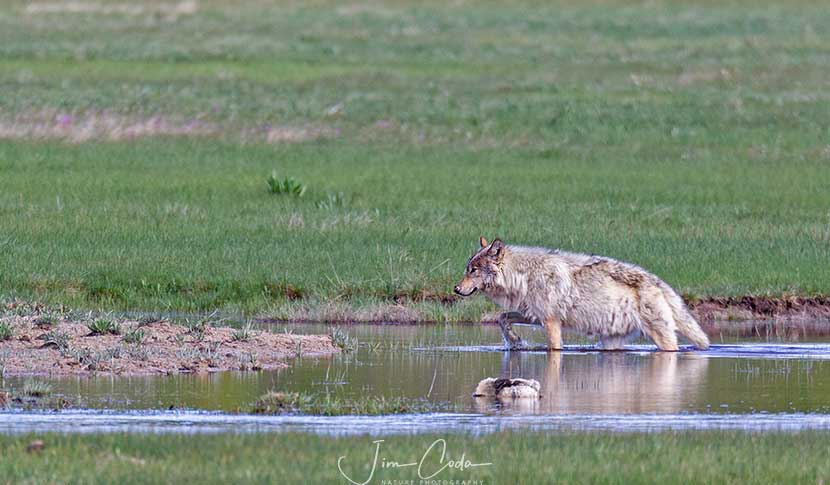Gray Wolf, Yellowstone National Park

A gray wolf crossing a creek in Yellowstone.
This wolf had been feeding on an elk carcass in this Yellowstone meadow for a few days. Note the full belly. During that period I never saw another wolf or bear at the site.







